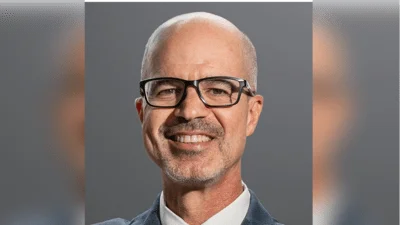The Congressional Record is a unique source of public documentation. It started in 1873, documenting nearly all the major and minor policies being discussed and debated.
“RECOGNIZING THE ACCOMPLISHMENTS OF THE CU SOLAR DECATHLON TEAM” mentioning the U.S. Dept. of Energy was published in the Extensions of Remarks section on pages E1817-E1818 on Oct. 11, 2002.
The publication is reproduced in full below:
RECOGNIZING THE ACCOMPLISHMENTS OF THE CU SOLAR DECATHLON TEAM
______
HON. MARK UDALL
of colorado
in the house of representatives
Thursday, October 10, 2002
Mr. UDALL of Colorado. Mr. Speaker, I rise today to recognize the accomplishments of a talented group of students from the University of Colorado who designed and built the winning entry at the Department of Energy's Solar Decathlon. I am submitting for the Record a recent article from the Daily Camera describing the team's achievement.
The Solar Decathlon is a competition organized by the Department of Energy that gives college students an opportunity to demonstrate practical uses of solar power. This October, 14 university teams from around the country competed in the first-ever Solar Decathlon to build the most energy-efficient, solar-powered house. Each team was required to use solar energy to power the entire house, and was judged on how well its house was able to produce energy for heating, cooling, hot water, lighting, appliances, computers, and charging an electric car. The houses were also critiqued on their overall aesthetic design.
The students from the University of Colorado designed a building that demonstrates how clean, renewable, solar energy can practically and efficiently power a home. They focused on making the design of the house attractive and affordable to show that homeowners don't have to compromise style and convenience to live in a sustainable and environmentally friendly way.
These enterprising students from the University of Colorado had a challenge--to take advanced architectural and engineering concepts, put them together in a design, and build a house that could be a model of our energy future. These students met that challenge and met it better than any of the other teams. I'm proud of these students and I'm proud that the University of Colorado produced such a talented team. Most of all, I am proud to represent these young people who are working so hard to make our way of life a sustainable one.
CU Wins Contest for Solar House Design
Builders Triumph Over 13 Other College Teams
(By Ryan Alessi)
Washington.--The bright sunny October morning proved an appropriate backdrop Saturday for the 14 Solar Decathlon teams to finish the last few tasks of the weeklong competition.
The 14 homes built on the National Mall by college teams from around the country and Puerto Rico had been probed, monitored, inspected and judged since last weekend. Architects and U.S. Department of Energy officials rated the teams in 10 categories ranging from the appearance of the homes to how much energy they saved. And of course, everything from the fridge to their electric buggy-mobiles had to be powered by sunlight.
By Saturday morning, the University of Colorado sat atop the standings as the team to beat. Then, shortly after noon, video cameras, photographers and a crowd began gathering outside the CU team's house, leaving little doubt that they had, in fact, won.
At a brief ceremony, David Garman, assistant energy secretary for energy efficiency and renewable energy, presented a polished steel trophy to Michael Brandemuehl, the CU team's adviser and professor of civil, environmental and architectural engineering.
The University of Virginia, which started the day in third place, passed Auburn University for second place. ``We were pretty confident,'' said Mike Renner, CU's engineering design leader. ``All the other teams had pretty much decided they were going for second.''
The judges scored the CU house among the top five in all the design-based categories. And the engineering spoke for itself as the team received the best marks in the competition for the amount of electricity it generated and how efficiently the home used the power.
``It's a well-oiled machine because of the team's all-around planning,'' said Sheila Hayter, one of the scoring officials from the National Renewable Energy Laboratory in Golden. She said the team's use of recycled materials also boosted the team's scores. ``They put together a very environmentally conscious house.'' That also caught the attention of many of the estimated 75,000 visitors who have streamed through the solar village.
``I loved their efficient use of space and their overall design,'' said Elizabeth Ridgeway, visiting Washington from North Hollywood, Calif. She voted for CU's house in a separate People's Choice competition whose winner will be announced today. ``And they used a lot of interesting materials,'' said Bill Lyon, also from Los Angeles. ``I really liked to see so many students focusing on the environment.''
After the Energy Department declared CU the winner, other onlookers couldn't wait to see the house, so a group rushed up to the porch and into the foyer before team members could stop them.
``Geez, they're practically breaking the doors down,'' Renner said. ``Good thing we don't have any goal posts.''
Team members said that type of public response has been the real trophy that they can take away from the competition, especially because this home was their second design. They opted to scrap their original design in January and start over.
The public response ``was satisfying for us as individuals because the reason we changed our design was because we didn't agree that it was the direction we should go,'' said Adam Jackaway, a graduate student in charge of the home's lighting and the passive solar design. ``And the direction we should go is targeting the homeowners who are looking for something right now that conforms to their aesthetic taste and what they can afford and what is easy to operate.''
Jackaway said he wants to challenge the Department of Energy to hold this kind of a competition not only for college students, but for home builders, car manufacturers and energy companies, to see who can build the most self-sufficient neighborhoods, the most efficient vehicles and the cleanest energy.
The CU home--which cost about $200,000 for materials, construction and transportation to Washington--will return to campus for about a year. Then, team members say, they plan to sell the 800-square-foot house to make up some of the costs.
As for the competition, Richard King, the Solar Decathlon's founder and director, said the Department of Energy will begin focusing on the next decathlon for fall 2004.
He said future teams probably will study how the CU team wove engineering and architecture together to build a winning design.
Teams that didn't properly balance the two quickly fell from the top five. The University of Maryland, a team of all engineering students, built a plain, white, box-like house that ``worked like a tank,'' King said. It scored high in engineering but low in design.
The Carnegie Mellon team of all design students had large windows, open ventilation systems and tons of recycled materials. ``It looks great, but they couldn't get it to work,'' King said.
``So now the engineers will go back and say, `Hey, we need to get some architects.' And the architects will go back and say, `We need engineers,' '' he said. ``That's how it works in real life.''
The team from CU used everything from compressed sunflower board to reclaimed bleacher seats for cabinet facing. Other
``green'' materials used included soy adhesives in the countertops and bamboo flooring.
To help make the home more energy-efficient, the team installed thermally insulated blinds and limited the highest ceiling to 18 feet.
About 100 students and faculty from engineering, architecture and design programs at CU have worked on the project for the past two years, said Matthew Henry, the team's construction manager and design leader.
Henry, 28, graduated from CU last spring with a degree in environmental design, but he said the project meant so much to him that he came back to help with the competition.
``The prize is going to be someone coming up and saying I want to build a whole community of these types of houses, I want to build better,'' he said.
For more information on the CU team's project, visit solar.colorado.edu.
(The Associated Press contributed to this report.)
____________________








